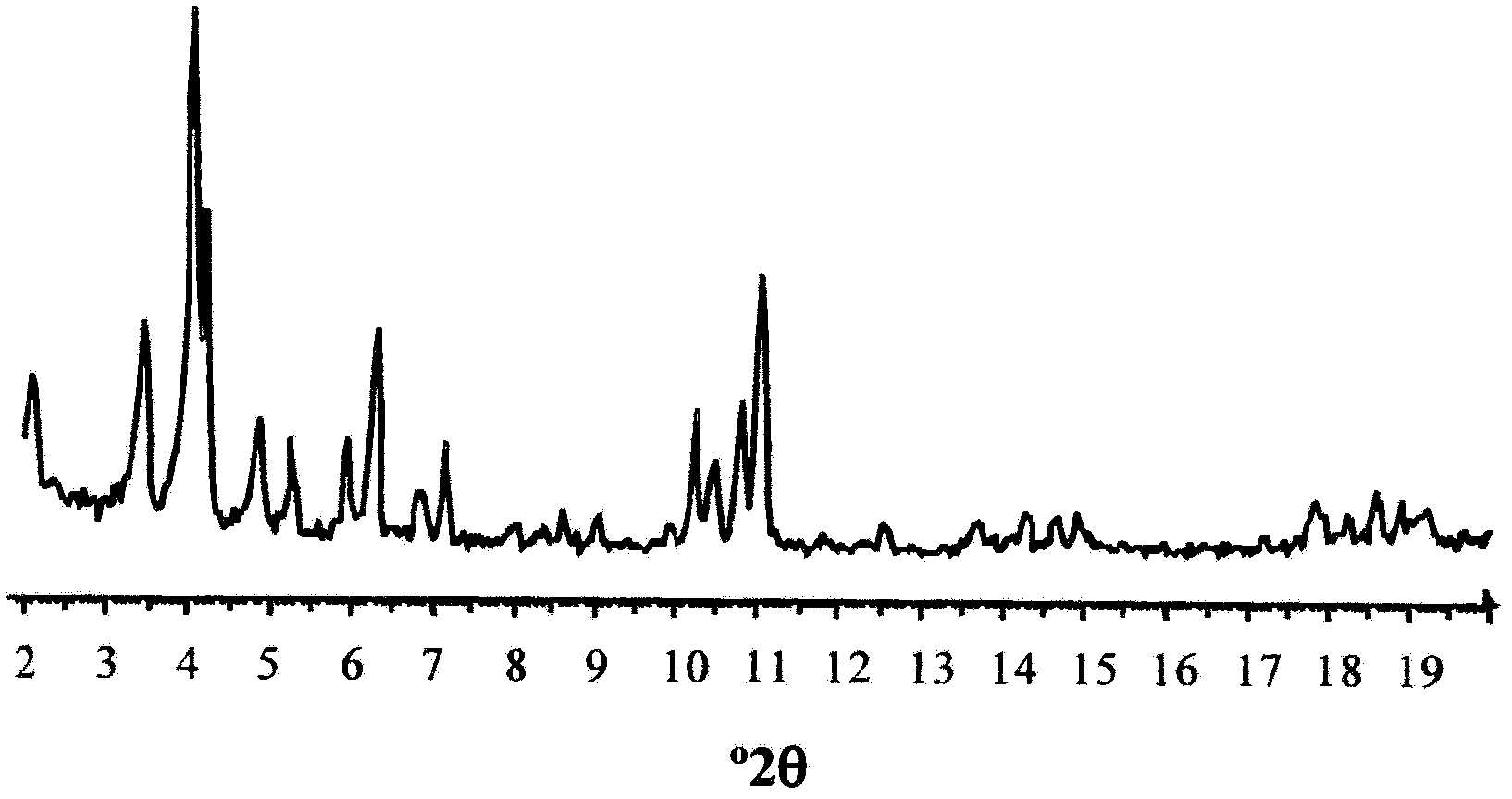Use Of A Porous Crystalline Hybrid Solid As A Nitrogen Oxide Reduction Catalyst And Devices
A porous crystalline, nitrogen oxide technology, applied in metal/metal oxide/metal hydroxide catalysts, organic compound/hydride/coordination complex catalysts, physical/chemical process catalysts, etc., can solve the problem of insufficient activity, Structural collapse, instability, etc.
- Summary
- Abstract
- Description
- Claims
- Application Information
AI Technical Summary
Problems solved by technology
Method used
Image
Examples
Embodiment 1
[0375] Example 1: Synthesis and data of examples of iron carboxylates useful as catalysts according to the invention
[0376] This example describes the synthesis of various metal carboxylates useful in the application of the invention. The solid obtained was characterized according to the method described below.
[0377] The crystallographic structure of iron carboxylate solid was analyzed by X-ray diffraction, using Siemens D5000 diffractometer (Cu Kα radiation, Mode θ-2θ), in air at room temperature. The figure is in terms of angular distance (2θ, degree °) or interplanar spacing (d, (Angstrom) shown).
[0378] The porosity (Langmuir specific surface area and pore volume) properties of the solid were measured by nitrogen adsorption at 77K, using a Micromeretics ASAP-2010 instrument. The solid was previously dehydrated overnight at 150° C. under one vacuum. The nitrogen adsorption isotherm of this solid is given by the curve representing the volume of adsorbed nitrog...
Embodiment 2
[0616] Example 2: Synthesis of iron(III) acetate for the manufacture of MOFs that can be used in the present invention
[0617] The iron(III) acetate used in the examples given below for the synthesis of the MOF material according to the present invention was synthesized according to the following scheme. This step of synthesis can refer to the work of Dziobkowski et al., Inorg. Chem., 1982, 21, 671 [87].
[0618] 6.72g metallic iron powder (Riedel-de , 99%), 64mL deionized water and 33.6mL water containing 70% perchloric acid (Riedel-de ) with magnetic stirring and heating at 50°C for 3 hours. After turning off the heat, the solution was stirred for 12 hours. The remaining metallic iron was removed by decantation, followed by replacement of the vessel. With stirring, 20.6 mL of aqueous hydrogen peroxide solution (35% sold by Alfa Aesar) was added dropwise, and the whole was kept under an ice bath at 0°C. 19.7 g of sodium acetate (Aldrich, 99%) was added to the blue sol...
Embodiment 3
[0619] Embodiment 3: synthesis can be used for the MOF ligand of the present invention
[0620] a) Synthesis A: Synthesis of chloroterephthalic acid
[0621] 6 g (0.043 mol) of chloroxylene (sold by Aldrich Corporation, >99%), 16 mL of nitric acid (sold by VWR Corporation, 70%), and 60 mL of distilled water were placed in a 120-mL polytetrafluoroethylene container. The container was placed in a PAAR metal cylinder and heated at 170°C for 12h. The product was recovered by filtration and washed with a large amount of distilled water. A yield of 75% was obtained.
[0622] 1 H NMR (300MHz, d 6 -DMSO): δ (ppm): 7.86 (d, J = 7.8 Hz), 7.93 (dd, J = 7.8; 1.2 Hz), 7.96 (d, J = 1.2 Hz).
[0623] b) Synthesis B: Synthesis of 3,5,3',5'-tetramethylbiphenyl-4,4'-dicarboxylic acid
[0624] The reaction scheme for this synthesis is Figure 48 shown in .
[0625] first step:
[0626] 10.2 g of tetramethylbenzidine (98%, Alfa Aesar) were suspended in 39 mL of concentrated hydroch...
PUM
| Property | Measurement | Unit |
|---|---|---|
| pore size | aaaaa | aaaaa |
| porosity | aaaaa | aaaaa |
| size | aaaaa | aaaaa |
Abstract
Description
Claims
Application Information
 Login to View More
Login to View More - R&D
- Intellectual Property
- Life Sciences
- Materials
- Tech Scout
- Unparalleled Data Quality
- Higher Quality Content
- 60% Fewer Hallucinations
Browse by: Latest US Patents, China's latest patents, Technical Efficacy Thesaurus, Application Domain, Technology Topic, Popular Technical Reports.
© 2025 PatSnap. All rights reserved.Legal|Privacy policy|Modern Slavery Act Transparency Statement|Sitemap|About US| Contact US: help@patsnap.com



